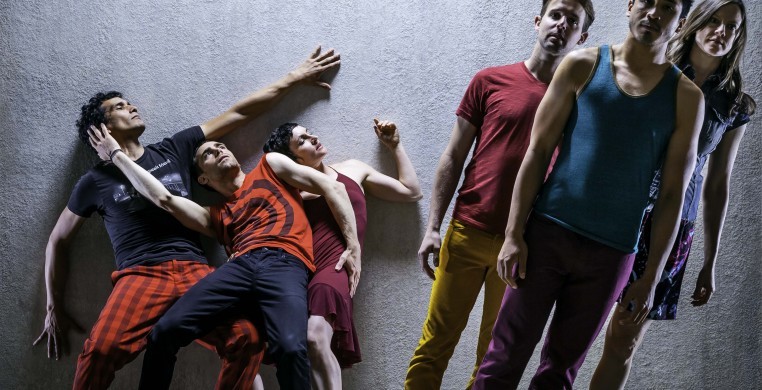Joe Goode’s “Hush” begins with a song. “I’m channeling my inner Willie Nelson,” the choreographer says, stepping out for a quick introduction and a Nelson-like serenade of the folksy variety. Goode claims his mini overture has nothing to do with his earnest dance-theater adventure, now at the Dance Center of Columbia College through Saturday, but there may be no better way to start.
Just a few years removed from its debut, “Hush” is still beguiling as ever. Back in 2013, the roughly 90-minute work debuted at San Francisco’s Z Space, a progressive artistic hub nestled in the colorful auspices of the city’s Mission District. Goode is perhaps holding out hope that his rock-a-bye-like sensibility can soothe a much more rugged, scandal-ridden Chicago, a city in a state that still has no budget and where the mayor, in the wake of several high-profile instances of police misconduct, is persona non grata. Since “Hush” is about secrets, it only makes sense to think about the ones that have tied us all together.
That’s Goode’s essential premise, which goes as far as to suggest that secrets also function as survival mechanisms. In Goode’s world, six characters engage in a series of gleeful and destitute expositions while mingling in and around Sam’s Bar, a local dive where everybody knows each other’s names. In the program notes, Goode tells us that much of the dialogue derives from interviews he and the company conducted with real people: members of the LGBTQ community, sexual assault victims, elderly citizens, many of them, as Goode says, who have felt silenced or “hushed.” You might also say marginalized.
Venting their problems and frustrations (both tangential and central), Goode’s characters find comfort in their alliances: a self-described A-sexual finds love with a closeted gay man; an emotionally scarred barmaid relates to the social stigmas attached to her A-sexual friend; while an emotionally fragile poet, struggling to reconcile his relationship with a corporate-hungry spouse, confides in his buddy Carlos, who also happens to be the closeted gay man. Some of this is spoken, some of it sung, some of it danced. All of it with a shroud of secrecy.
What transpires is a whimsical drama that highlights Goode’s many exceptional qualities as a dance maker, even if the dialogue leaves much to be desired. His likable, forgiving style is built on the natural mobility of the body, embracing the fumbles as much as the technique, much like the best scenes in a movie can be unrehearsed or improvised. “Happy accidents,” as industry folks might say. And it makes for a much more authentic performance. Foley Artist Sudhu Tewari turns it up a notch with an excellent live performance of the score. Though barely visible from the wings, Tewari could easily be perceived as artist in residence at Sam’s Bar, all of which is to say that this Petri dish of music, theater, and dance is as much about inclusion as it is secrets.
That sense of community, no matter the theatrical shortcomings, brings a nice slice of light to relatively dark places.

